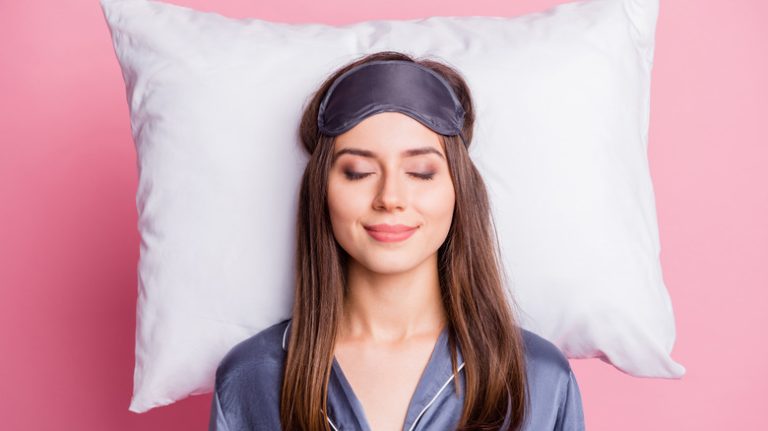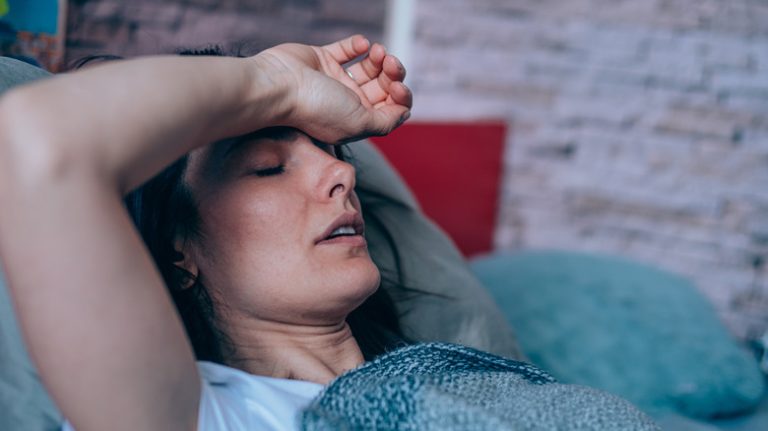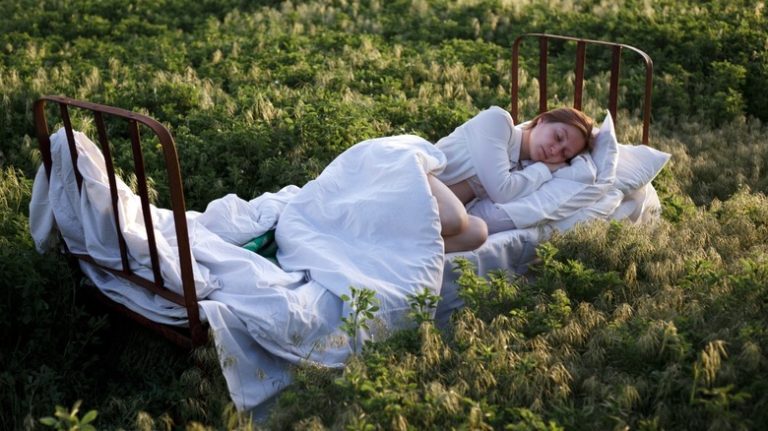You know how important sleep is for your mental health and your productivity at work. Sure, in years past, you might have adopted the “I’ll sleep when I’m dead” attitude, but you noticed that cheating on sleep left you with brain fog and irritability. Over time, a lack of sleep puts you at risk for chronic issues such as heart disease, obesity, and dementia, according to the National Institutes of Health.
Yet let’s face it — it’s sometimes hard to get to sleep. You might aim for your 7 to 9 recommended hours of sleep per night, but job worries or family conflicts can easily keep you up.
Good sleep hygiene helps, such as keeping your bedroom quiet, cool, and dark. Avoiding large meals, stimulants, and alcohol several hours before bed could also alleviate some of the physical disruptors of sleep. Meditation and breath practices can become part of your evening ritual to unwind your mind as you prepare for a deep slumber (via the National Health Service). One additional way to help you settle your mind and body might sound unconventional, but yogis know that inversion poses such as headstands can help you fall asleep.
Inversions can calm your mind
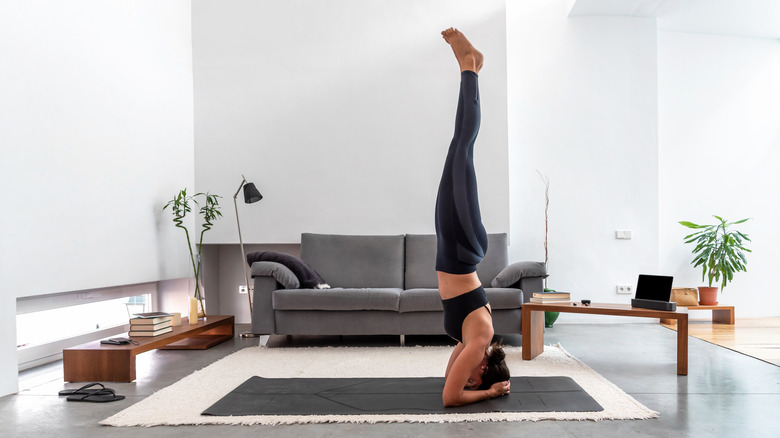
It might sound counterintuitive that headstands are calming, especially since you’re sending all that blood to your head. However, according to Healthline, inversions such as headstands can help settle your mind after a chaotic day. Headstands stimulate the pituitary gland (which regulates your hormones), and your pineal gland (which regulates your sleep cycle). Inversions like headstands also help filter out harmful substances from your body.
If headstands are already a part of your yoga practice, it might help to prepare your body first by doing dolphin pose, forearm plank, or downward-facing dog.
You should avoid headstands if you have neck, shoulder, or back issues. People who have heart conditions or high blood pressure should opt for other calming yoga poses. Because headstands force blood towards the head, people with eye conditions such as glaucoma should skip doing a headstand or any inversion where the head is below the heart. People who are pregnant or menstruating might also need to skip poses like headstands.
Try this headstand alternative
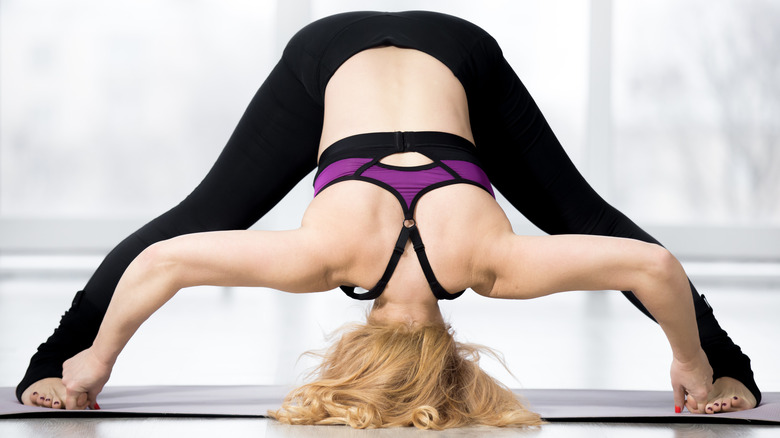
If you can’t do a headstand, you’re like many beginning yoga practitioners. However, you can get some of the same calming, sleep-inducing benefits of a headstand by doing a wide-legged forward fold, or prasarita padottanasana.
Step your feet a good (but comfortable) distance apart with the outside of your feet somewhat parallel to the edges of your mat. With your hands on your thighs, inhale and lengthen your spine. On the exhale, fold from your hips, using your hands as brakes so you don’t fall too quickly. Once your torso falls easily forward, reach your hands towards the floor (via Everyday Yoga). If your hands don’t reach the floor, use a chair or a wall to support your hands. Breathe deep in this pose while imagining your spine lengthening.
To come out of the pose, bring your hands back to your thighs and inhale as you raise your torso while keeping a flat back. You can also come out of the pose by stepping your feet together and then bending your knees to sit on the floor.

